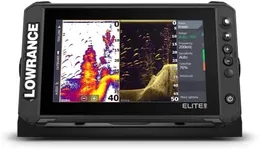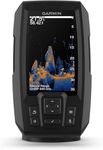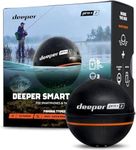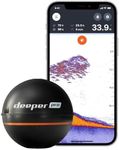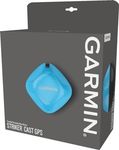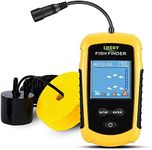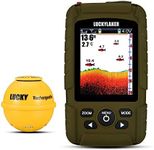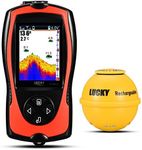Buying Guide for the Best Castable Fish Finder
Choosing the right castable fish finder can significantly enhance your fishing experience by helping you locate fish more efficiently. These devices are portable, easy to use, and can be cast into the water to provide real-time data about fish location, water depth, and underwater structures. When selecting a castable fish finder, it's important to consider various specifications that will align with your fishing needs and preferences.Sonar TechnologySonar technology is the method by which fish finders detect underwater objects, including fish. It sends sound waves into the water and interprets the echoes that bounce back. This spec is crucial because it determines the accuracy and detail of the information you receive. Basic sonar provides a simple view of the underwater environment, while more advanced options like CHIRP sonar offer greater detail and resolution. If you're a casual angler, basic sonar might suffice, but for more serious fishing, consider advanced sonar for better precision.
Depth RangeDepth range indicates how deep the fish finder can scan underwater. This is important because it determines the environments in which you can effectively use the device. Shallow water fishing might only require a depth range of up to 100 feet, while deep-sea fishing could necessitate a range of several hundred feet. Consider the typical depth of the waters you fish in to choose a suitable depth range.
ConnectivityConnectivity refers to how the fish finder communicates with your smartphone or tablet, usually via Bluetooth or Wi-Fi. This is important for real-time data transfer and ease of use. Bluetooth is generally sufficient for short-range connections, while Wi-Fi can offer a more stable connection over longer distances. If you plan to fish in areas with potential interference or need a more reliable connection, Wi-Fi might be the better choice.
Battery LifeBattery life determines how long the fish finder can operate on a single charge. This is crucial for planning your fishing trips, especially if you're out for extended periods. Shorter battery life might be acceptable for quick outings, but for longer trips, look for a device with a battery life of several hours or more. Consider your typical fishing duration to ensure the battery life meets your needs.
PortabilityPortability refers to the ease with which you can transport and use the fish finder. This is important for convenience and flexibility, especially if you fish in various locations. Smaller, lightweight models are easier to carry and cast, making them ideal for shore fishing or when you need to move frequently. If you prioritize ease of transport, opt for a compact and lightweight design.
App CompatibilityApp compatibility indicates which smartphone or tablet apps the fish finder can work with. This is important for accessing and interpreting the data collected by the device. Some fish finders have proprietary apps with specific features, while others may work with a range of third-party apps. Consider the features you need, such as mapping or data logging, and ensure the fish finder is compatible with apps that offer these functionalities.
